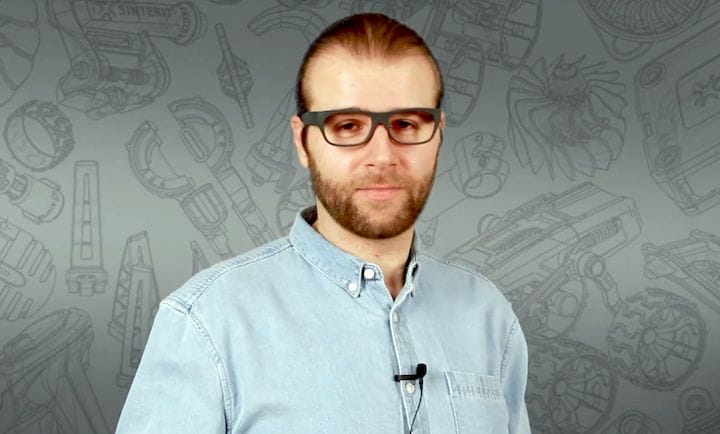![Konrad Kobus, a Smooth Operator [Source: Sinterit]](https://fabbaloo.com/wp-content/uploads/2020/05/image-asset_img_5eb098b0c8930.jpg)
I’m watching some interesting videos from Sinterit about their materials.
Sinterit is a Polish Company that specializes in producing low-cost SLS desktop 3D printers. The SLS process involves a laser selectively sintering a flat bed of thermoplastic powder. Successive layers and sintering gradually form a complete object.
For years SLS systems have been financially out of reach for many organizations due to the extreme costs involved. However, recently Sinterit and a few other organizations introduced the concept of low-cost desktop SLS systems that have since proven to be quite popular.
The most popular materials used in SLS 3D printing are nylons, particularly PA12. Sinterit provides materials to go along with their 3D printing equipment, and of course, they provide PA12. Another common material used in their systems is PA11. These two materials both offer very practical characteristics that are applicable in many situations.
Sinterit recently published a pair of videos on each of these two materials, and I must say they’re pretty cheesy, particularly this one:
Starring Konrad Kobus, a mechanical engineer at Sinterit with a deadpan delivery that’s fun to watch, they do show the capabilities and differences between these two interesting materials.
Here’s the video on PA11, also starring Kobus:
We’re not sure whether Kobus should pursue a Hollywood gig, standup comedy, or continue his career at Sinterit, but he makes an interesting point about surface texture.
The PA12 material from Sinterit is described as “smooth”, whereas their PA11 is described as “rough”. This refers to the particle size used in their powder preparation process, or perhaps the thermal effects when the material is softend by the laser.
Kobus correctly points out that neither of these results is right or wrong; they are merely outcomes of using a particular material and are thus applicable in different situations.
It’s up to the designer to select the right material for the job. In addition to the more familiar engineering characteristics of mechanical strength, temperature resistance, UV resistance, and chemical resistance, one must also consider surface texture.
It’s certainly possible to use a variety of post-processing techniques to obtain a smooth surface texture even on the roughest 3D print, but the point here is that you don’t always want a smooth surface texture. There are many applications where a rough surface is actually required.
For example, any type of handle that must be grasped, particularly in challenging outdoor environments, would certainly benefit from a rough surface texture.
The moral of the story here is that in every case, the usage of an object should determine the material and making process.
Via Sinterit











An inventive designer has developed a method for producing 3D paper objects using recycled paper and 3D printed molds.